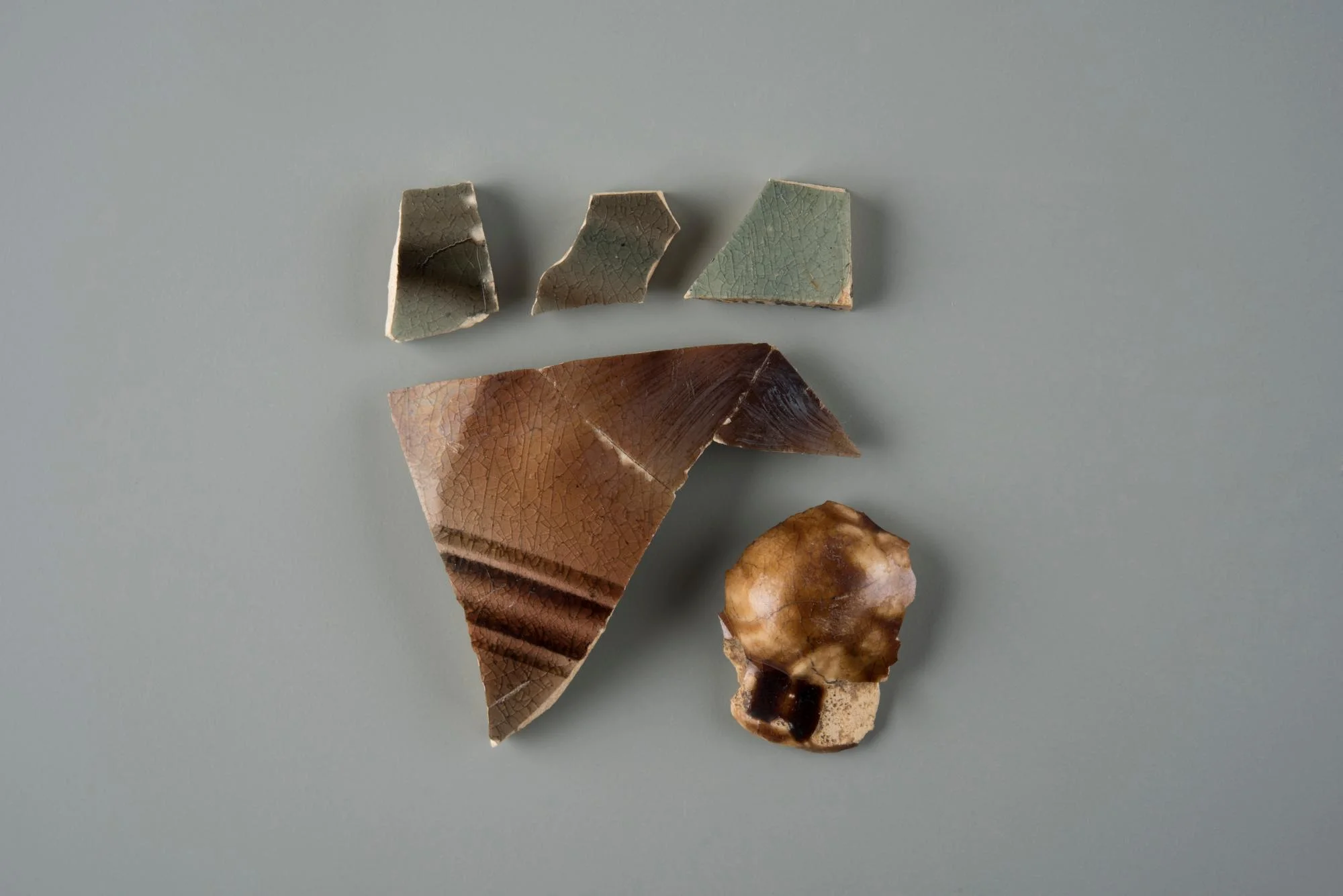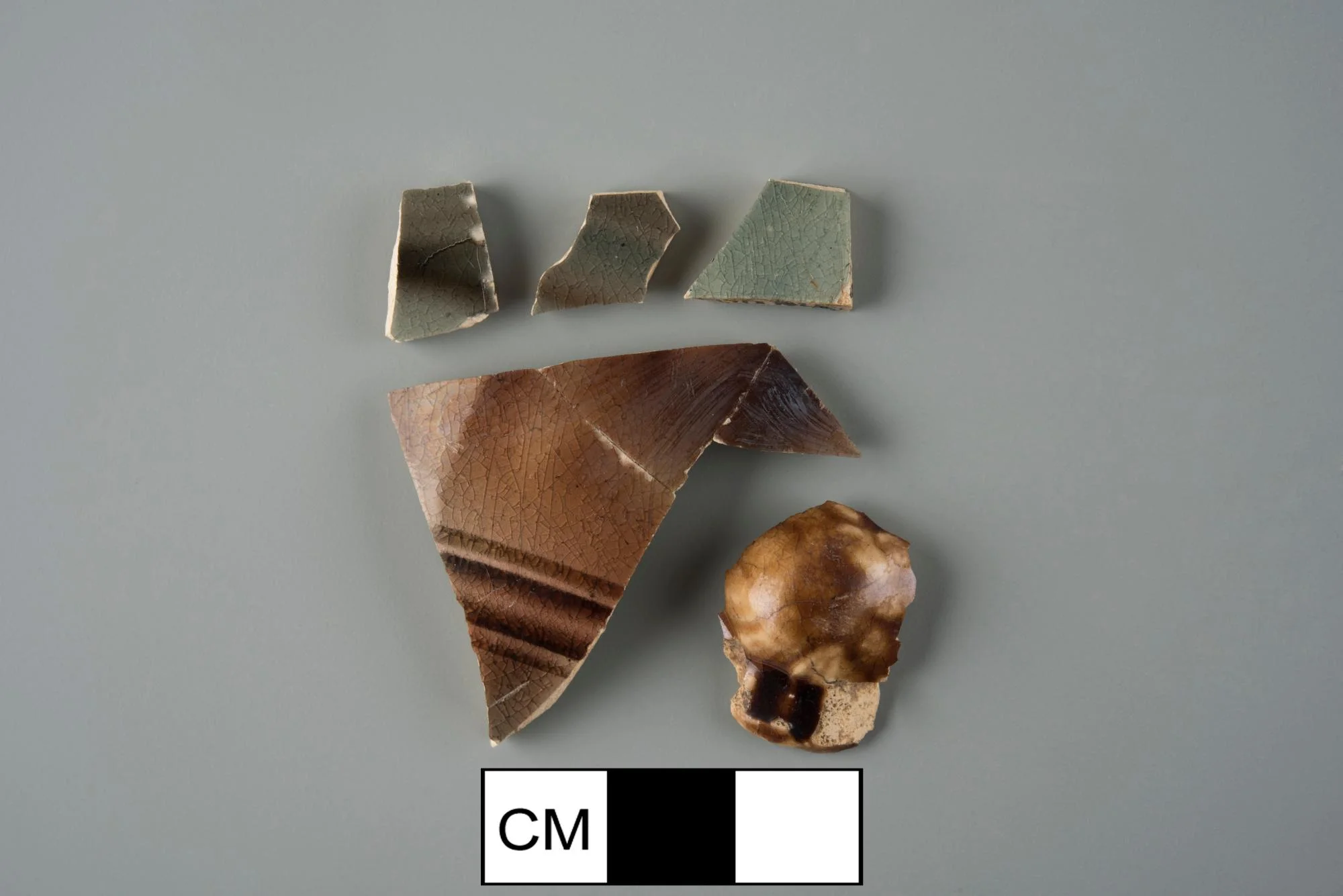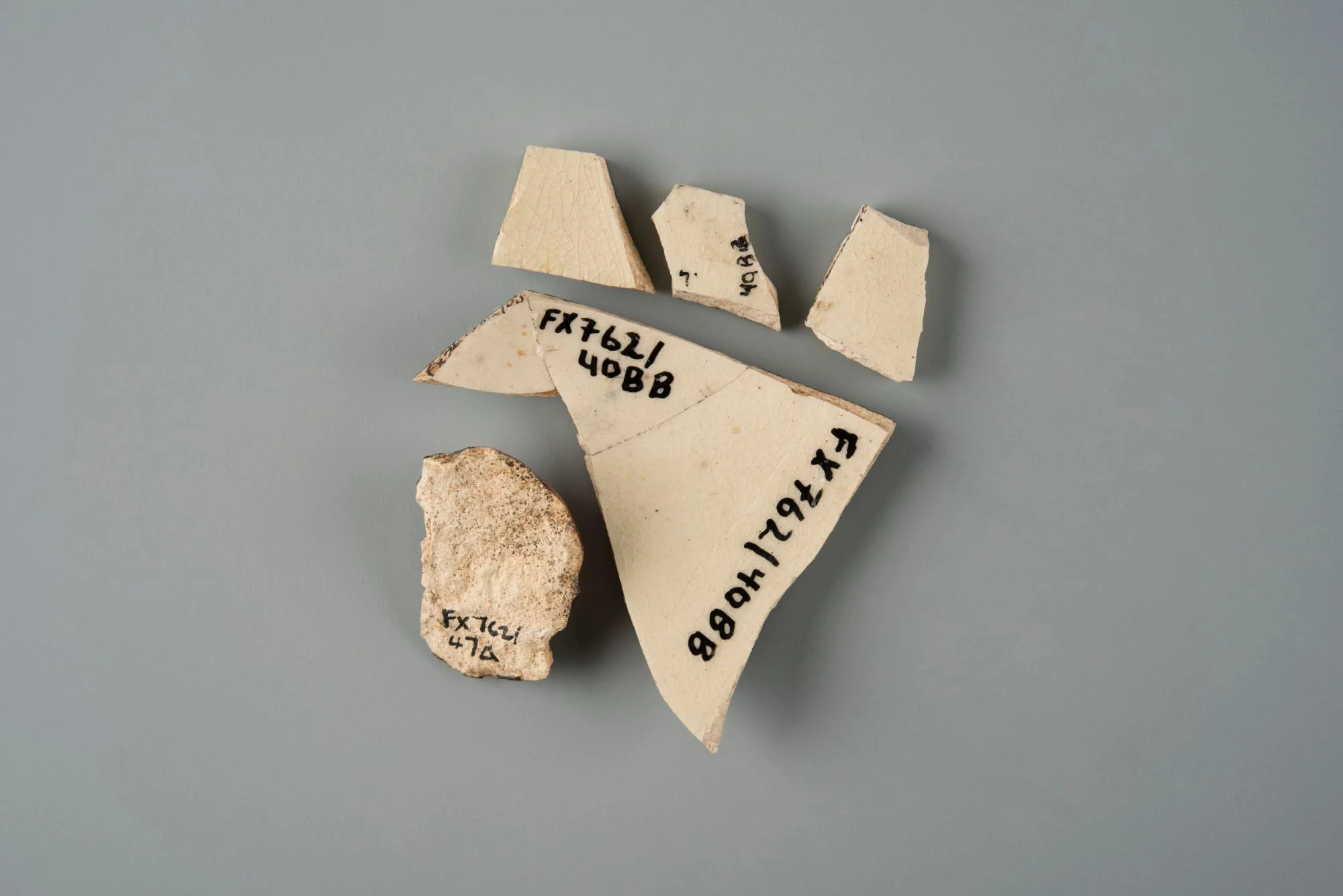Notes
This fragment of thinly potted cream colored ceramic is a hollow, handled teaware form. Archaeologists refer to this kind of ceramic as Whieldon-type ware. One of the primary ceramics advancements of the mid-eighteenth century was the development of thinly potted cream colored ceramics. In the early 1740s, the same clays used for white salt glazed stonewares with slightly altered proportions were found to produce creamy ceramics when they were fired twice. The first firing, at lower temperatures than for stonewares, produced a “biscuit” hard vessel, which was fired a second time after decoration and the application of a liquid lead glaze. Whieldonwares are traditionally associated with the partnership of Thomas Whieldon and Josiah Wedgewood, but were made by many of the potteries near Stoke on Trent. By 1749, oxides (iron, copper, and manganese) were being added to the surfaces of these ceramics to create cloudy patches of color as decoration on these vessels.
Handled teaware forms, pots, cups, and creamers such as this fragment may represent were essential for the consumption of tea within the households of the eighteenth century. By the mid-eighteenth century and later, tea drinking was a common practice within households of both high and low social and economic statuses. Brewing, serving and drinking tea required a variety of vessel forms. Of course, despite originating as specialized vessels for tea, such forms could have been used to serve or drink a variety of other liquids as well.
Object Type
Has it Been Conserved?
No
Where Was It Found?
Project Site: House for Families [more details]
Material
Vessel
Manufacturing Technology
Form
Completeness
Decorative Technology
Decorative Notes
Clouded green and brown glaze with cordons.
Date
1740-1775
Country of Origin
Illustration shows object in comparison to the size of a quarter
Object Number
1723009. CW V.1
DAACS Number
1723009
Project: House for Families
The structure identified as the “House for Families” on the 1787 Vaughan plan likely housed the majority of the enslaved population living at the Mansion House Farm for much of the second half of the eighteenth century. The building was in existence from circa 1760 until it was demolished in late 1792 or early 1793. The archaeological evidence for the structure consisted of a brick-lined storage cellar (44FX762/40-47) measuring roughly six feet by six feet. Historically the cellar served as a handy trash receptacle once it ceased to be used for its original storage function, and through extensive excavation has yielded an extremely rich assemblage of household refuse. The analysis of these remains offers the opportunity to study important aspects of the daily lives of Mount Vernon's enslaved community.
See All Objects From this Dig


 Ceramic
Ceramic